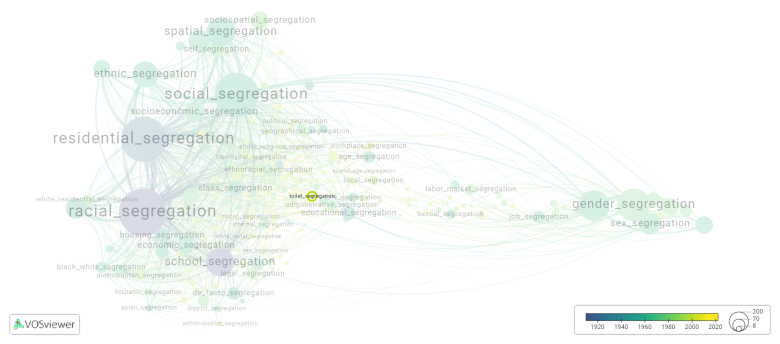Toilet segregation: Difference between revisions
(Creating page) |
(Creating page) |
||
| (4 intermediate revisions by the same user not shown) | |||
| Line 9: | Line 9: | ||
In many places, toilet segregation is legally mandated or socially accepted. However, it is important to note that some individuals may not conform to traditional gender binaries, identifying as non-binary, transgender, or gender non-conforming. These individuals may face challenges or discomfort when using gender-segregated restrooms, leading to discussions on the need for inclusive and non-discriminatory restroom facilities. | In many places, toilet segregation is legally mandated or socially accepted. However, it is important to note that some individuals may not conform to traditional gender binaries, identifying as non-binary, transgender, or gender non-conforming. These individuals may face challenges or discomfort when using gender-segregated restrooms, leading to discussions on the need for inclusive and non-discriminatory restroom facilities. | ||
==== | ==See also== | ||
==Related segregation forms== | |||
Toilet segregation is frequently discussed in the literature with the following segregation forms: | |||
[[binary gender segregation]] | |||
[[File:toilet_segregation.png|780x780px]] | |||
This visualization is based on the study [[Segregation_Wiki:About| The Multidisciplinary Landscape of Segregation Research]]. | |||
For the complete network of interrelated segregation forms, please refer to: | |||
* [https://tinyurl.com/2235lkhw First year of publication] | |||
* [https://tinyurl.com/2d8wg5n3 Louvain clusters] | |||
* [https://tinyurl.com/223udk5r Betweenness centrality] | |||
* [https://tinyurl.com/244d8unz Disciplines in which segregation forms first emerged (Scopus database).] | |||
==References== | ==References== | ||
==Notes== | ==Notes== | ||
<references /> | <references /> | ||
{{NoteAI}} | {{NoteAI}} | ||
==Toilet | ==Toilet segregation appears in the following literature== | ||
Faktor A. (2011 | Faktor A. (2011). Accessand exclusion: Public toilets as sites of insecurity for gender and sexual minorities in North America. ''Journal of Human Security'', ''7''(3), 10-22. https://doi.org/10.3316/JHS0703010 | ||
Latest revision as of 07:17, 16 October 2024
Date and country of first publication[1][edit | edit source]
2011
Canada
Definition[edit | edit source]
Toilet segregation refers to a system where individuals are separated based on their gender or sex when using public restrooms or toilets. This practice is typically enforced through the existence of separate male and female facilities.
The purpose of toilet segregation is to provide privacy, safety, and convenience to individuals in public spaces. It is believed to maintain a sense of modesty and comfort, as well as address any concerns related to potential harassment or inappropriate behavior.
In many places, toilet segregation is legally mandated or socially accepted. However, it is important to note that some individuals may not conform to traditional gender binaries, identifying as non-binary, transgender, or gender non-conforming. These individuals may face challenges or discomfort when using gender-segregated restrooms, leading to discussions on the need for inclusive and non-discriminatory restroom facilities.
See also[edit | edit source]
Related segregation forms[edit | edit source]
Toilet segregation is frequently discussed in the literature with the following segregation forms:
This visualization is based on the study The Multidisciplinary Landscape of Segregation Research.
For the complete network of interrelated segregation forms, please refer to:
References[edit | edit source]
Notes[edit | edit source]
- ↑ Date and country of first publication as informed by the Scopus database (December 2023).
At its current state, this definition has been generated by a Large Language Model (LLM) so far without review by an independent researcher or a member of the curating team of segregation experts that keep the Segregation Wiki online. While we strive for accuracy, we cannot guarantee its reliability, completeness and timeliness. Please use this content with caution and verify information as needed. Also, feel free to improve on the definition as you see fit, including the use of references and other informational resources. We value your input in enhancing the quality and accuracy of the definitions of segregation forms collectively offered in the Segregation Wiki ©.
Toilet segregation appears in the following literature[edit | edit source]
Faktor A. (2011). Accessand exclusion: Public toilets as sites of insecurity for gender and sexual minorities in North America. Journal of Human Security, 7(3), 10-22. https://doi.org/10.3316/JHS0703010

